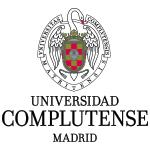Diarrheagenic Escherichia coli Pathotypes From Children Younger Than 5 Years in Kano State, Nigeria
Frontiers in Public Health publish this investigation article
November 27th, 2019
Diarrheagenic Escherichia coli (DEC) is one of the leading causes of gastrointestinal disorders worldwide and an important public health challenge. DEC infection is often underdiagnosed during routine microbiological analysis, especially in resource constrained settings; the use of molecular tests could however help to determine the distribution of DEC and its clinical significance. Here, a study to assess the prevalence of DEC in clinical samples from patients <5 years attending three hospitals in Kano state, Nigeria, was carried out. Samples from 400 patients and 50 controls were collected and screened for E. coli. Compatible colonies from 248 individuals (215 patients and 33 controls) were characterized using biochemical test, a set of real-time PCRs for detection of nine virulence factors (VF: eae, bfpA, elt, est, stx1, stx2, ehxA, aggR, and invA) associated with five DEC pathotypes (EPEC, ETEC, EHEC, EAEC, and EIEC) and antimicrobial susceptibility tests. One or more VFs typical of specific pathotypes were detected in 73.8% (183/248) of the isolates, with those associated with EAEC (36.3%), ETEC (17.3%), and EPEC (6.0%) being the most common, although proportion of specific pathotypes differed between hospitals. est was the only VF detected in a significantly higher proportion in cases compared to controls (P = 0.034). Up to 86.9% of DEC were resistant to at least one class of antibiotics, with trimethoprim-sulfamethoxazole being the least effective drug (77.6% resistance). Our results demonstrate the widespread circulation of different DEC pathotypes that were highly resistant to trimethoprim-sulfamethoxazole among children in Kano state, and highlight the need of characterizing the causative agents in cases of gastrointestinal disorders
Saka KH., Dabo NT., Muhammad B., Garcia-Soto S., Ugarte-Ruiz M. and Alvarez J..
 | Nigerian Stored Products Research Institute (NSPRI). |
 | Department of Microbiology. Bayero University Kano (BUK). |
 | Department of Biological Sciences. Bayero University Kano (BUK). |
 | Centro de Vigilancia Sanitaria Veterinaria (VISAVET). Universidad Complutense (UCM). |
 | Departamento de Sanidad Animal. Facultad de Veterinaria. Universidad Complutense (UCM). |
